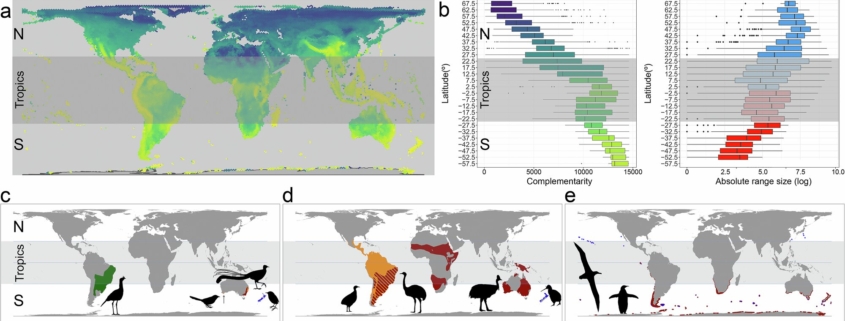SOUTHERN HEMISPHERE BIRDLIFE HOLDS IRREPLACEABLE SPECIES
The snow petrel, a strikingly white bird with black eyes and bill, is one of only three bird species observed at the South Pole. Antarctica is the only place it lives, and like many sub-Antarctic species, it is endemic – found nowhere else on Earth.
Endemism highlights areas critical for conservation, but new research shows it has been underestimated in the southern hemisphere.
Endemic species often have restricted ranges and unique evolutionary histories, making them more vulnerable to threats like climate change and invasive species. If overlooked, conservation may fail to protect birds that are truly irreplaceable.
Why the underestimation? Traditional measures favor species-rich areas, overlooking species-poor regions such as Antarctica. Our study instead used “complementarity”- which identifies species unique to a site – revealing southern regions as global hotspots.
Global hotspots of endemism emerged in the sub-Antarctic islands, the High Andes, southern Africa, Australia, and New Zealand. These areas host charismatic lineages such as kiwis, emus, cassowaries, wrens, lyrebirds, penguins, and albatrosses.
Land and ocean distribution explains the difference. The northern hemisphere has continuous landmasses, allowing broader species ranges. The southern hemisphere, fragmented by vast oceans, creates smaller, isolated habitats where species ranges are limited – driving higher endemism. Heightened vulnerability follows. Climate change will push species toward cooler zones, but southern-hemisphere birds face barriers of ocean.
For species at southern continental edges, the next landmass south is Antarctica—unsuitable for most birds. Meanwhile, many climate studies focus on the north, leaving southern species understudied.
This means conservation must expand beyond species-rich areas. Even sites with fewer species can hold unique birds vital to ecosystems. Protecting these regions is essential to preserve evolutionary history, ecological function, and resilience in the face of global change.
Factors underlying the observed differences in endemism (complementarity) between hemispheres. Credit: Nature Communications (2025).



